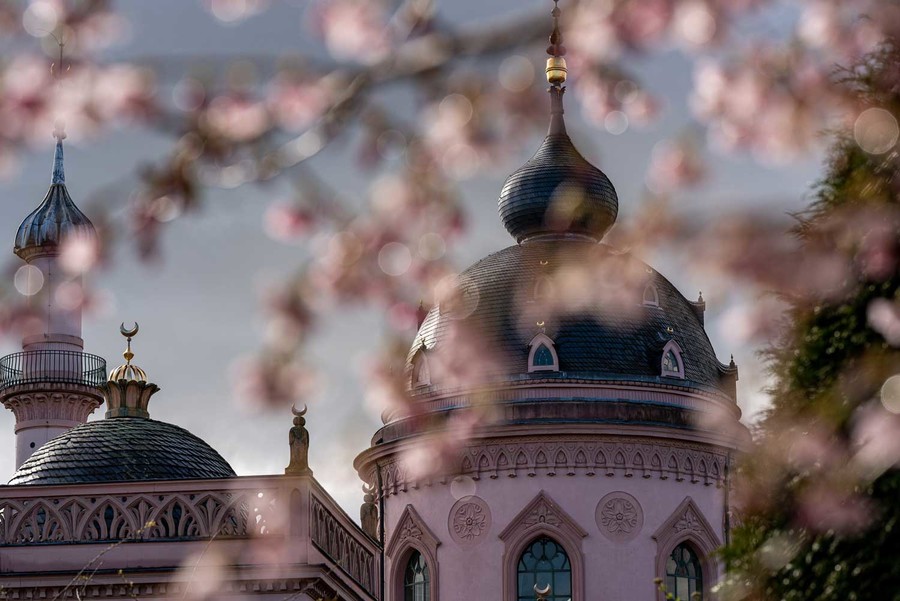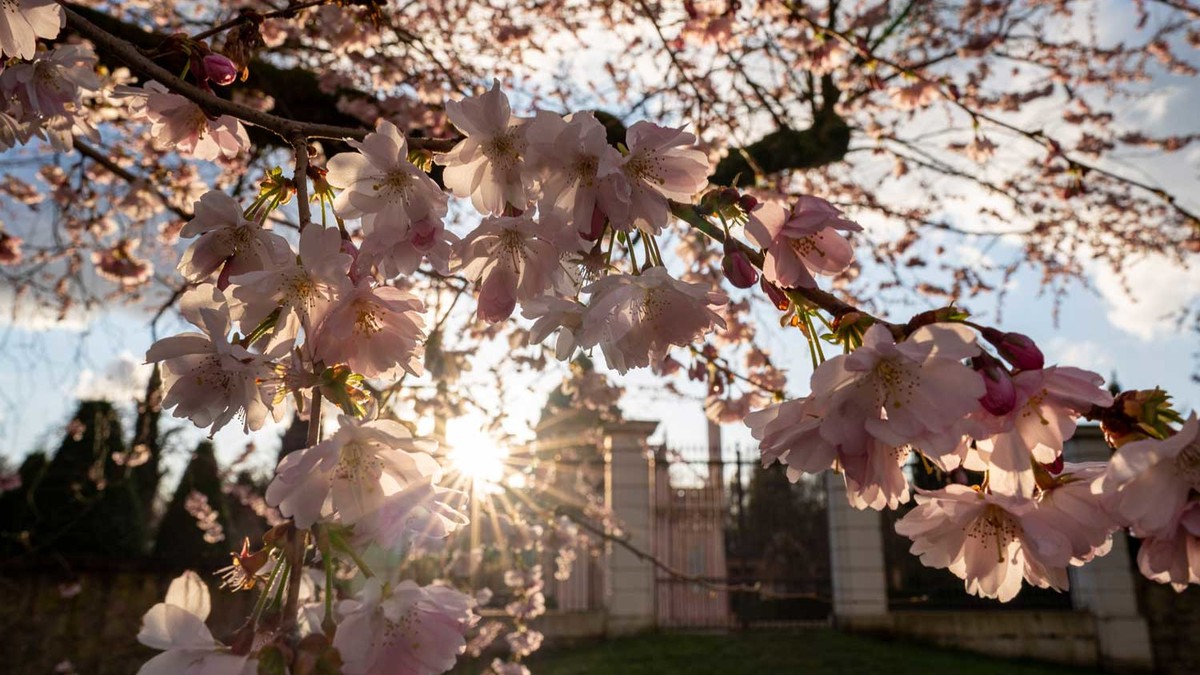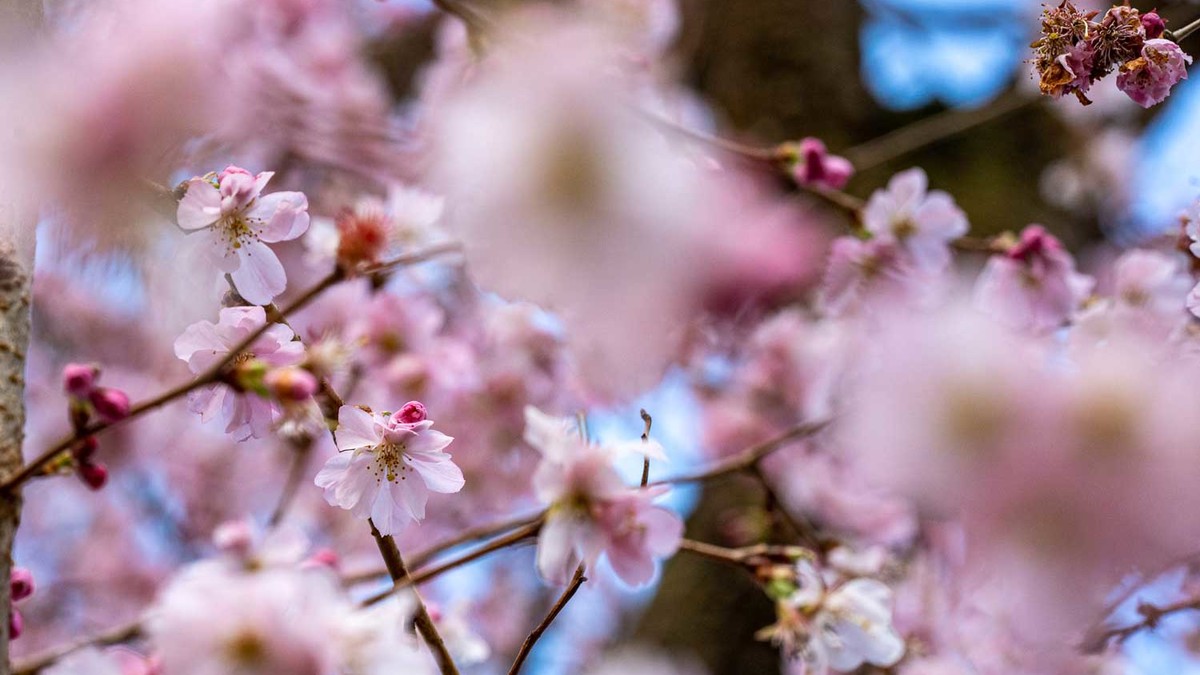Spring in Baden-Württemberg
Cherry Blossoms Galore in the Schwetzingen Palace Gardens
© TMBW


BW Story - Hirsch & Greif
Ready for 'Hanami' in SouthWest Germany?
With one of Germany’s largest groves of Japanese cherry trees, Schwetzingen Palace is a major draw for the “hanami”, the spring cherry blossom festival. Once the gnarled trees are in full bloom, strolling beneath the boughs is like walking under a pink cloud. And in the gentlest breeze, petals cascade like a waterfall. It is no surprise that every year, as many as 15,000 visitors experience SouthWest Germany’s very own hanami, 90 minutes northwest of Stuttgart. When exactly the natural spectacle reaches its peak depends, of course, on Mother Nature.
An Unpredictable Natural Spectacle
Cherry Blossom Time
“Sometimes you feel as if you are wrapped in pink cotton candy when you stand under these Japanese cherry trees. It’s an amazing experience,” according to Wolfgang Schröck-Schmidt, an art historian from the Baden-Württemberg State Palaces and Gardens organization. Trees are very independent, even stubborn, so it is difficult to predict the exact flowering period. “And if there is a sudden heavy frost at the beginning of flowering,” continues Schröck-Schmidt, “then all the blooms drop off and fall to the ground.” That's why people keep their fingers firmly crossed in March and April.

Schwetzingen Palace
Summer residence of Prince Elector Carl Theodor
The area of the palace gardens that turns pink with blossom once a year was originally a kitchen garden. According to Schröck-Schmidt, back in the 18th century, this provided all the fruit, vegetables and herbs for the court of Prince Elector Carl Theodor of the Palatinate: "Half of his Mannheim court spent the summer months here, because Carl Theodor used the palace as his summer residence. That‘s why he expanded the palace gardens." The art historian adds: “As many as a 1,000 people arrived by carriage; there was lots going on in Schwetzingen.” The kitchen garden became even more important, as it supplied fresh produce to the court as it moved from palace to palace. The garden was next to the so-called Red Mosque, which was designed by court architect Nicolas de Pigage for Carl Theodor at the end of the 18th century. This had no religious purpose, but was considered a symbol of the elector's cosmopolitan attitude. In fact, the Schwetzingen Mosque was the first and largest of its kind in Germany.
Prince Elector Carl Theodor
The Royal Who Loved Art and Agriculture
So what happened to the Elector's kitchen garden? Later, in the 19th century, when the castle belonged to the Grand Duchy of Baden, the area was turned into an orchard, devoted only to fruit trees. After 1945, the gardens were abandoned until the 1960s, when Japanese cherry trees were planted. Now there are about 50 mature trees. "The paths form a cross," explains Schröck-Schmidt, "the trees were planted along them to make little avenues." The art historian believes that what is here today would have pleased Carl Theodor. This sophisticated prince not only loved music, art and philosophy (he met Mozart and Voltaire), but also supported new ideas in agriculture. He was said to have been a relatively enlightened, tolerant and versatile ruler. No wonder the Palatinate thrived during his reign.

Today, the Japanese cherries – also known as oriental cherries – look splendid with the mosque as a backdrop. Its Arabic-looking façade shimmers through the sea of flowers in spring. At the end of the 1990s, heritage fruit trees were planted to form a secondary row. This mirrors the original Schwetzingen vegetable garden, so the design project has come full circle. On quiet days, this is a delightful place: come for gardening inspiration; come to think about art, philosophy, agriculture or even your own life. Enjoy the arrival of spring; marvel at Mother Nature; slow down and relax.










